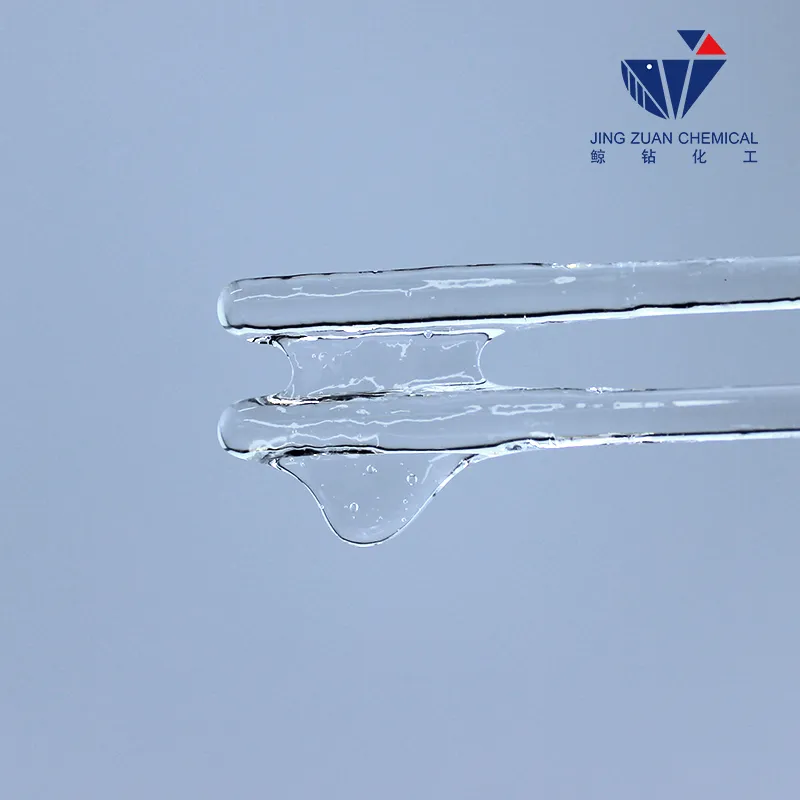
নভে. . 30, 2024 04:19 Back to list
Solubility of Hydroxyethyl Cellulose in Ethanol Solutions and Its Implications
The Solubility of Hydroxyethyl Cellulose in Ethanol
Hydroxyethyl cellulose (HEC) is a widely used hydrophilic polymer that belongs to the cellulose ether family. Its unique properties, such as high water solubility, film-forming ability, and excellent thickening characteristics, make HEC a popular choice in various applications, including pharmaceuticals, cosmetics, food processing, and construction. One of the critical factors influencing its application is its solubility in various solvents, including ethanol.
Understanding Hydroxyethyl Cellulose
HEC is derived from cellulose through the reaction of ethylene oxide with hydroxyl groups present in cellulose. This modification introduces hydrophilic hydroxyethyl groups, enhancing the polymer’s ability to interact with water and other polar solvents. The molecular weight of HEC can vary significantly, affecting its viscosity and solubility characteristics. Generally, HEC is available in several grades, with specific properties tailored for distinct applications.
Solubility Parameters
The solubility of HEC primarily depends on its molecular weight, concentration, and the nature of the solvent. HEC is highly soluble in water due to its hydrophilic nature. However, the solubility of HEC in organic solvents like ethanol is of particular interest for certain industrial applications. Ethanol, being a polar solvent, has a different solubility profile compared to water, which can influence the behavior of HEC in various formulations.
Solubility of HEC in Ethanol
hydroxyethyl cellulose solubility in ethanol

The dissolution of HEC in ethanol is less straightforward than in water. Hydroxyethyl cellulose exhibits limited solubility in ethanol, especially at higher concentrations. This solubility limitation can be attributed to the decreased polarity of ethanol compared to water. The hydroxyl groups in HEC interact effectively with water but have weaker interactions with ethanol, leading to reduced solubility. Moreover, the molecular weight of HEC plays a significant role in its solubility in ethanol; lower molecular weight HEC can dissolve more readily compared to higher molecular weight counterparts.
In practice, the solubility of HEC in ethanol can be manipulated through the use of co-solvents or by adjusting the temperature. For instance, adding small amounts of water to ethanol can enhance HEC’s solubility due to the preferential solvation of the polymer by water molecules. Similarly, heating the mixture can lead to increased kinetic energy, which promotes the dissolution process. However, care must be taken, as excessive heat may lead to the degradation of HEC.
Implications for Applications
Understanding the solubility of HEC in ethanol is crucial for its application across various industries. In the pharmaceutical sector, HEC can be utilized as a binder in tablet formulations or as a thickening agent in liquid drugs. However, its limited solubility in ethanol could restrict its use in alcohol-based formulations, requiring the incorporation of other solubilizers or selecting alternative polymers.
In cosmetics, HEC is often used in gels and creams. The solubility behavior in ethanol plays a pivotal role in the formulation of alcohol-based products, particularly in ensuring optimal texture and viscosity. A careful balance must be maintained to achieve the desired product characteristics without compromising stability.
Conclusion
In summary, the solubility of hydroxyethyl cellulose in ethanol is influenced by several factors, including molecular weight, solvent properties, and external conditions like temperature and concentration. While HEC exhibits limited solubility in ethanol, appropriate formulation strategies can be employed to enhance its performance in various applications. As industries continually seek innovative solutions and formulations, a deeper understanding of polymer solubility will remain essential for harnessing the full potential of hydroxyethyl cellulose in both existing and emerging markets.
-
tile-bonding-additives-for-stronger-bonds
NewsAug.22,2025
-
construction-grade-rdp-for-wholesale-needs
NewsAug.22,2025
-
trusted-hec-supplier
NewsAug.22,2025
-
HEC Solutions for Industrial Excellence
NewsAug.22,2025
-
Construction Additives Need HPMC Essentials
NewsAug.22,2025
-
HPMC Versatile Cellulose Ether for Industries
NewsAug.22,2025







